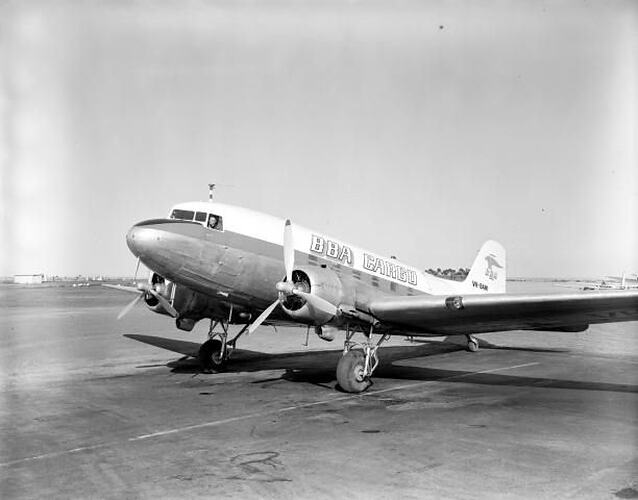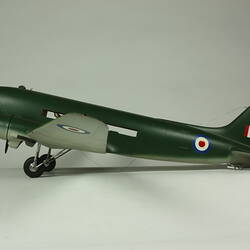Few technological designs have had the impact or longevity of the Douglas DC-3 or its military version the C-47. In both transport and passenger configurations, it has earned a place as one of the most significant industrial designs of the 20th century. Starting with the DC-1 and DC-2 in the early 1930s, the DC-3 was envisaged in 1935 as a 'sleeper transport' (DST) version of the DC-2 to allow passengers to have a bunk bed on long trans-continental flights across the USA. It soon became clear to the airlines that a wider fuselage meant more seats with higher revenue per flight and the bunks were left out. DC-3 deliveries began in 1936.
The DC-3 offered safe and reliable travel and soon became a popular choice for US domestic airlines and was used in Australia by Australian National Airways for intercity routes prior to the Second World War. By this time there was a clear preference for US airliners among Australian operators and previous restrictions on importing non-British machines had been lifted.
The DC-3 was modified for military use and as the C-47 Skytrain it became the standard USAAF transport aircraft. The RAAF in Australia had taken a number of civilian DC-3 aircraft into service and also obtained C-47's from British orders. The C-47 was known as the Dakota in both the British and Australian service. It proved to be a vital asset in maintaining supplies to Australian forces in New Guinea and across the South-West Pacific Area during the war against Japan. In Europe, it was widely used by the RAF and USAAF to tow gliders and lift paratroops in the D-Day landings, at Arnhem and at the crossing of the Rhine. The C-47 was widely used to evacuate casualties in all theatres of war. About 10,000 C-47's were built, many in the Douglas factory at Long Beach, California.
After 1945, the availability of war surplus C-47s provided many airlines, including Ansett Airways with affordable equipment to replace older types for their operations. In Australia, the government owned Trans Australia Airlines flew its first passengers from Melbourne to Sydney in a converted C-47 on 9 September 1946. Many country airline services relied on the type until the 1970s. The RAAF continued to operate their C-47 aircraft until the 1990s. Several hundred remain airworthy around the world.
More Information
-
Keywords
-
Localities
United States of America, Australia, England, United Kingdom
-
Authors
-
Article types

